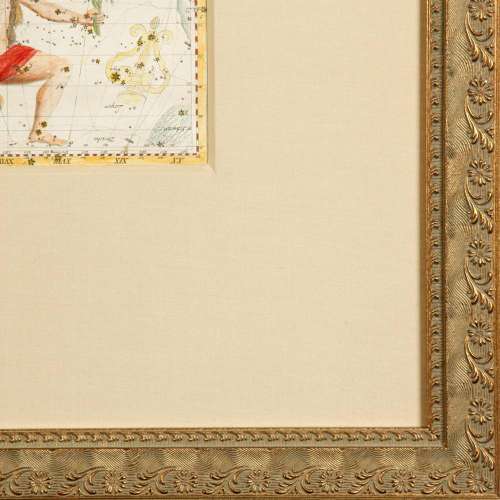Celestial Map of Hercules
As above, so below!
 |
|
|
Hand colored celestial map of the constellation Hercules; Published by Lange in Leipzig, Germany and dated 1782; PRIMITIVE I.D. #P0900-074; $2,895, framed
|
Look up at an unpolluted night sky and you will see many objects: suns, planets, moons, galaxies, shooting stars, maybe even a comet. Informed sky watchers can also see the eighty-eight modern constellations, although most were identified by the ancient Greek mathematician Claudius Ptolemy almost 2,000 years ago in his astronomical treatise, the Almagestum. This work was one of the most influential scientific texts of all time. It formed the basis of astronomy for almost twelve centuries until Nicolaus Copernicus wrote the sun rather than the earth was at the center of the universe in his own book, On the Revolutions of the Celestial Spheres. Yet, Copernicus never challenged Ptolemy’s identification of the constellations, the stories they told, or this week’s New Arrival.
 |

|
|
|
Celestial map of Hercules based on the observations of Johann Bode; Image Size: 10 W x 8 H; Framed Size: 22 W x 21 H inches; Gold frame with hand wrapped mat; PRIMITIVE I.D. #P0900-074 |
||
This week’s New Arrival features a hand colored celestial map from 1782 based on the observations of German astronomer Johann Bode. It depicts the fifth largest constellation in the night sky – Hercules – but it does little to articulate the story of this Greek hero. Little known about Hercules is the temporary bout of madness he suffered as a young adult. Upon regaining his senses, the God Apollo commanded him to perform a series of heroic tasks to atone for the sins he committed while insane. When completed, he took his place in the heavens and concluded his story, which persists to the present day. Even now, mythologists attribute man-made calamities and natural disasters to Hercules’ madness, but their stories always end with inspired acts of recovery, renewal and redemption. Look up at the night sky. You may not see Hercules, but written in the stars is the prophetic phrase, “As above, so below.”